Effects of Automation & Retraining for the 4th Industrial Revolution

This post is an adaptation of a talk I recently gave for the Global AI Mind Web Series hosted and organized by Wetogether.co and GirlsinTech Taiwan.
[embed]https://youtu.be/etgljmHfIhg[/embed]
Think about it for a moment….
Whether you realize it or not, you are living in a world that has been dramatically altered due to artificial intelligence and automation. Advances in technology have been improving the efficiency of everyday processes and recreating our workforce in incremental ways.
It’s easy to adapt to these small changes as they are introduced, since they provide convenience and eliminate tedious tasks but as small changes add up they quickly create a new version of reality.
When is the last time you had to filter spam from your email inbox? Why are your favorite color of shoes always at the top of your search query on amazon? How does facebook know to show you ads for that new pizza place you were just discussing with your spouse? These examples are just a few of the capabilities that AI has today.
In order to help you truly understand the future effects of Artificial Intelligence, I want to introduce you to the hypothetical Chen family. Mrs. Chen is a lawyer, and Mr. Chen is a Doctor. These are highly skilled professions that require many years of schooling, logical reasoning, and accuracy to perform well at and be successful. When the Chen children grow up, the jobs their parents do will look much different than what they look like today.

Why is that? What will change in the next 10 or 20 years for these and other occupations?
Automation Revolutionizing our Economy
The answer is the onset of exponential growth in automated technology due to advances in Artificial Intelligence. To better understand the rate of change taking place now, we have to understand how automation has affected our economies in the past.
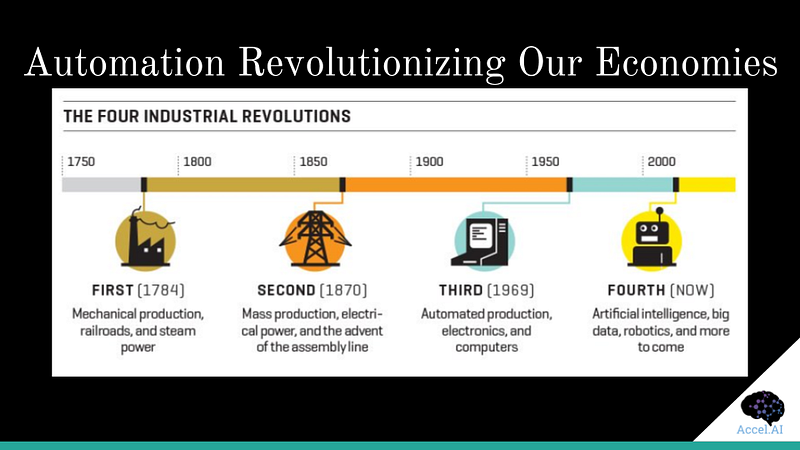
We have had several industrial revolutions led by automation.
Starting in the late 1700s, mechanization, water power, steam power, and railroads drastically changed the capabilities of our workforce and methods of transportation for goods around the world. In the mid to late 1800s, the invention and scale of electricity led to mass production leveraging human assembly lines in manufacturing. In the mid to late 1900s, electronics and computerization led to automated manufacturing.
We are now seeing the beginning of the fourth wave of an industrial revolution due to digitization, big data, internet of things and cognificationof everything.
Robot vs Human without Neural Networks
In the past there have been clear advantages to integrating robotics and automation with our workforce.
Robot’s have a higher capacity for:
Strength
Accuracy
Speed
They do not tire
They can do repetitive tasks
They can take and report measurements
On the other hand Humans have always had an advantage in:
Intelligence
Flexibility
Adaptability
Ability to Estimate
Skill Improvement over time (the ability to learn)
Emotional Awareness
How Automation Benefits Us
Automation has incredible benefits, the most prevalent being productivity.
Between 1850–1910, productivity grew 0.3% due to the introduction of the steam engine. Jumping ahead to 1993–2007, early robotics led to a 0.4% increase in productivity and in the IT sector, automation increased productivity 0.6% between 1995–2005. It’s predicted that automation due to Artificial Intelligence and Machine Learning will improve productivity by 0.8–1.4% on a global scale between 2015–2065.
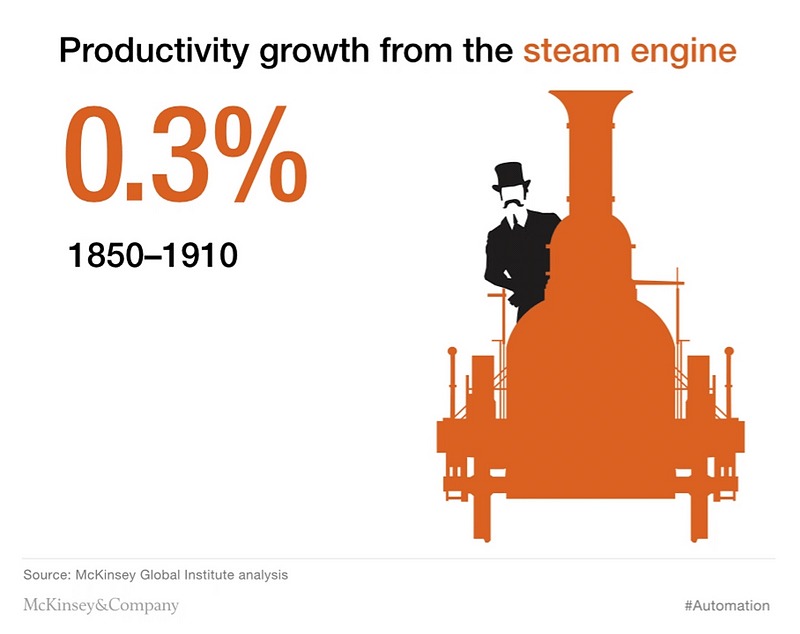
Automation has been around for decades, what is different this time?
Deep Learning in AI
The difference is the onset of advances in Deep Learning in AI.
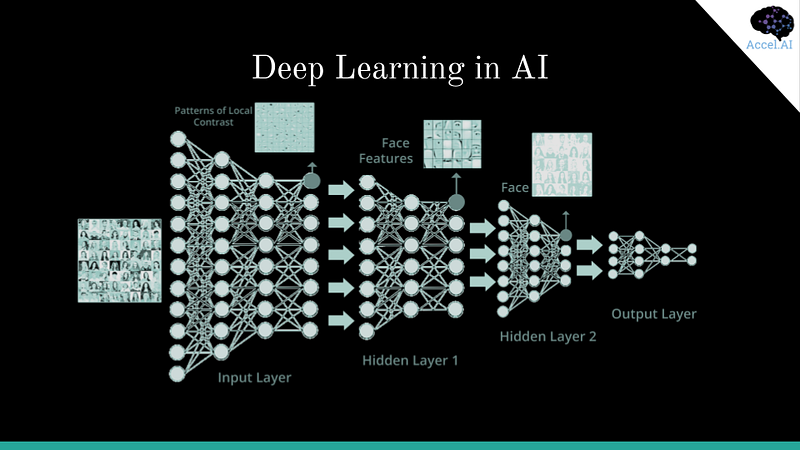
Deep learning is part of a broader family of machine learning methods based on learning data representations (also known as unsupervised learning), as opposed to task-specific algorithms (commonly found in supervised learning techniques).
The idea of using neural networks to perform deep learning tasks has been around since the 1950’s, formerly described using the concept of a perceptron. The difference being that Deep learning involves stacking many perceptrons or neural networks together through hidden layers — which perform multiple calculations and feature extractions within a fraction of time.
With the onset of Deep learning techniques, machines can now perceive and understand the world on their own.
These advances began with specific perceptual tasks using computer vision, training a neural network to recognize images using large datasets to perform feature extraction.
Deep learning has become the most popular approach in developing artificial intelligence today.
Why does this matter?
As Sundar Pichai, the CEO of Google stated, “The last 10 years have been about building a world that is mobile-first. In the next 10 years, we will shift to a world that is AI-first.”
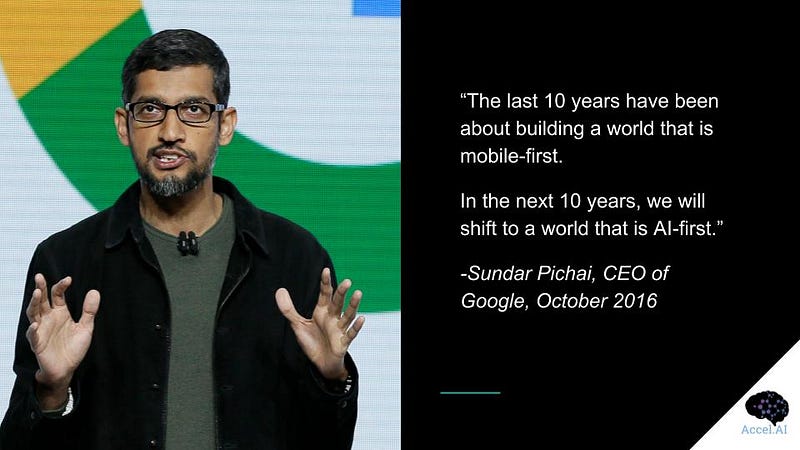
AI will continue to be integrated with every aspect of our lives and every industry.
There are many predicted future benefits of this integration. Along with increase in productivity & efficiency, we will see an increase in:
Accuracy
Increasing safety or lowering risk
Decrease cost in labor and production
Increased throughput
Increased quality
Increase customer satisfaction
Allowance for high value activities — enabling us more time to do the things in life we appreciate most.
Areas Most Likely to See Automation
There is no industry that does not have partial automation potential. It’s estimated that about half of all the activities people are paid to do in the world’s workforce could potentially be automated by adapting currently demonstrated technologies. That amounts to almost $15 trillion in wages.
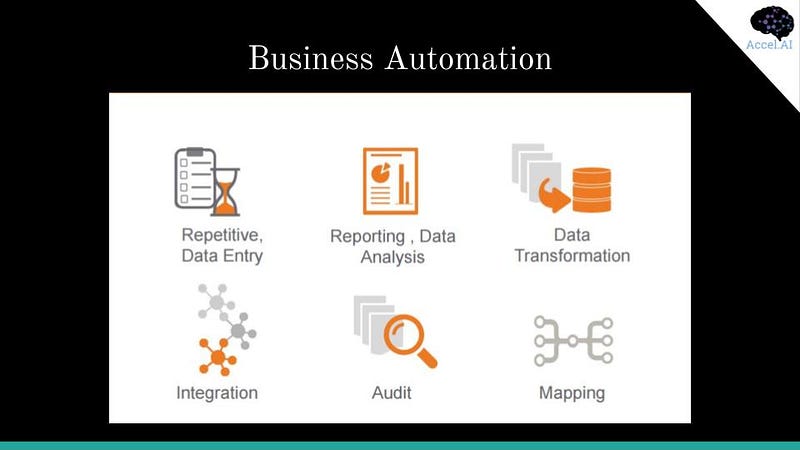
The activities most susceptible to automation are physical ones in highly structured and predictable environments, as well as data collection and processing.
It isn’t just blue collar work that is at risk for being automated. At an Executive level, a quarter to third of a CEOs time could be automated.
Automation on a Global Scale
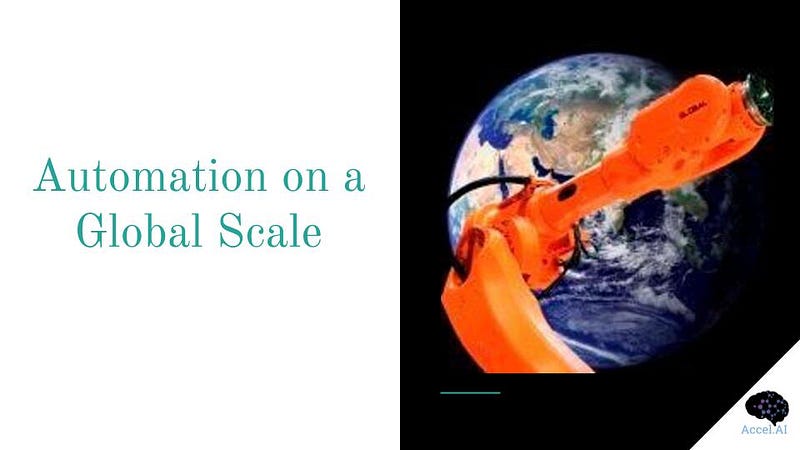
According to the McKinsey Global Institute, areas of the world that have the highest potential for automation include — China, India, and the US.
China: 395.3 million employees potentially automatable
India: 235.1 million employees potentially automatable
United States: 60.6 million employees potentially automatable
The industries with the highest propensity for automation in those countries include:
Accommodation and food services — Almost 70%
Manufacturing — Almost 65%
Transportation & Warehousing — 60%
Retail trade — 55%
Agriculture, forestry, fishing and hunting — 50%
Where machines could replace humans — and where they can’t (yet)
Future Work Automation
The onset of advanced technology in Artificial Intelligence allows for exponential breakthroughs that’ll catapult our society into the future.
Within only a few years, we now have self driving cars powered by LIDAR systems. Automated food purchasing, food preparation, and food service. Autonomous manufacturing plants and delivery systems. Even autonomous medical and surgical systems which can perform with higher accuracy than humans.
[embed]https://youtu.be/89JojY5Ou8g[/embed]
Risks of Automation
Cybersecurity
Just as organizations can use artificial intelligence to enhance their security posture, cybercriminals may begin to use it to build smarter malware.

In the future, we may have attacker/defender AI scenarios play out.
This new generation of malware will be situation-aware, meaning that it will understand the environment it is in and make calculated decisions about what to do next. In many ways, malware will begin to behave like a human attacker: performing reconnaissance, identifying targets, choosing methods of attack, and intelligently evading detection.
With networked systems such as self driving cars — this creates huge potential for terrorism and disaster without proper security measures put in place for defense.
Increased Inequality
Wage gaps between the upper and lower class have been shown to increase dramatically with advances in automation. They will continue to do so at the exponential rate of advancement we are facing, forcing the middle class that we think of today to be nonexistent in the future.
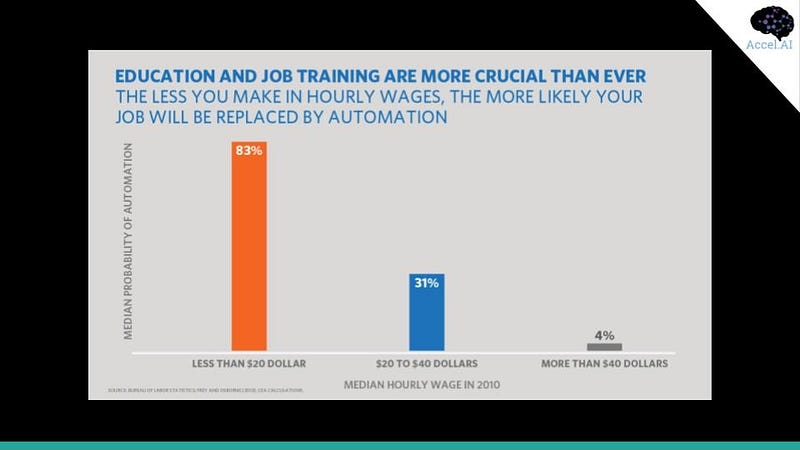
Those affected most will be low-skilled, low-wage workers.
Education and job training are more crucial than ever. The less you make in hourly wages, the more likely your job will be replaced by automation.
Bias in Machine Learning
Another huge risk in machine learning and automation is bias being perpetuated by AI systems.
These two pioneering women in tech and Artificial Intelligence, Melinda Gates and Fei Fei Li, have recognized this problem.
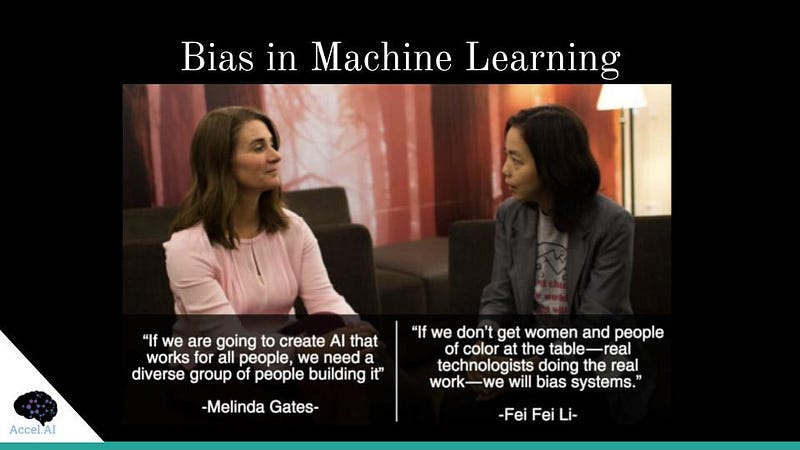
The phenomena of creating bias systems with AI has already been proven. It isn’t the fault of the algorithms or the machines, but the lack of proper awareness and oversight by engineers and researchers who are trained to look for these indicators.
If you don’t believe this is possible, just pick up a copy of Cathy O’Neil’s book Weapon’s of Math Destruction where she clearly outlines mathematical models or algorithms that claim to quantify important traits: teacher quality, recidivism risk, employability, and creditworthiness but have harmful outcomes and often reinforce inequality, keeping the poor poor and the rich rich. She gives in depth examples on how corruption that has been seen in finance is now being perpetuated by Big Data.
“…big data increases inequality and threatens democracy” — Cathy O’Neil
She also describes in depth how these systems create vicious feedback loops, much like our society.
“A person who scores as ‘high risk’ is likely to be unemployed and to come from a neighborhood where many of his friends and family have had run-ins with the law. Thanks in part to the resulting high score on the evaluation, he gets a longer sentence, locking him away for more years in a prison where he’s surrounded by fellow criminals — which raises the likelihood that he’ll return to prison. He is finally released into the same poor neighborhood, this time with a criminal record, which makes it that much harder to find a job. If he commits another crime, the recidivism model can claim another success. But in fact the model itself contributes to a toxic cycle and helps to sustain it.” — Cathy O’Neil
Datasets are already bias from systemic racism and our history of oppression. We need more underrepresented groups in tech and AI who can bring their unique life experiences to the table.
An “Existential Threat”
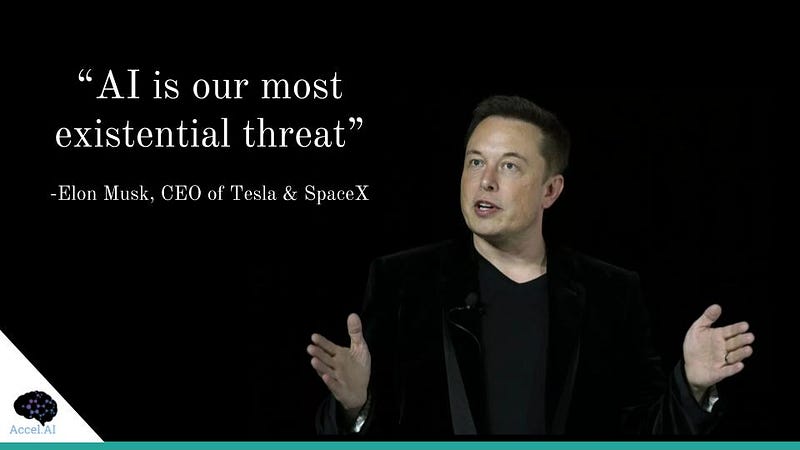
Founder and CEO of Tesla and SpaceX, Elon Musk has even warned that AI is our most “existential threat” to human civilization — potentially more dangerous than nukes.
Musk has called for precautionary, proactive government intervention. He thinks by the time we are reactive in AI regulation, it’ll be too late.
What can’t be automated?
So what is the light at the end of the tunnel? How do we prepare ourselves for this new age of automation? We must ask ourselves — what can’t be automated? We have to identify the things that are at core to our humanity.
I am talking about the things that are unique to our experience in the world. Specifically — Creativity and Empathy.
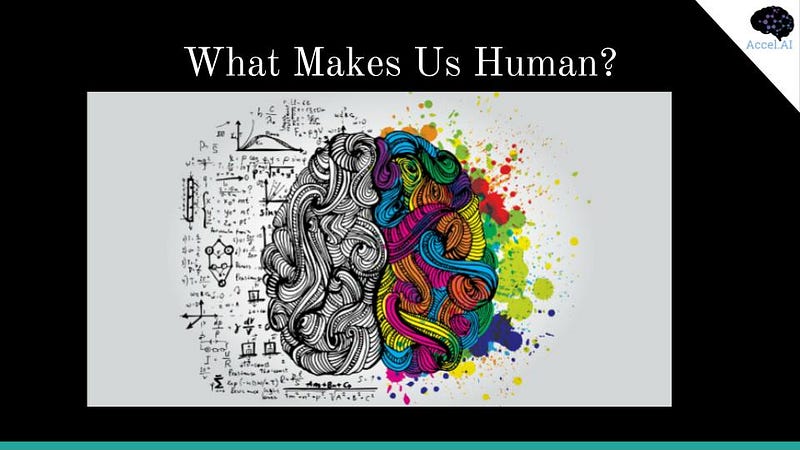
For now, machines cannot compete with us when it comes to tackling novel situations, and this puts a fundamental limit on the human tasks that machines will automate. We must embrace the novel, the uniqueness, the unconditional human condition.
A great example of creative evolution due to advances in technology is the invention of photography. When photography was invented, art, especially painting, changed. Portrait paintings went out of style. Did this mean that artists stopped painting? No, advances in technology allowed time for a series of art movements from pointillism, cubism, surrealism, abstract art and so on to emerge. This is likely what will happen with AI, it’s not that people will stop producing work, it will just get more creative and expressive, since there will be autonomous processes completing monotonous tasks, such as painting portrait after portrait.
Future Skills
So what does this mean for the future of work? The future state of any single job lies in the answer to a single question: To what extent is that job reducible to frequent, high-volume tasks, and to what extent does it involve tackling novel situations? On frequent, high-volume tasks, machines are getting smarter and smarter.
Other than in oversight and regulation of machines, humans will still be needed to perform in unique and creative situations. We’ll be needed to connect with one another, provide entertainment, creative output, and continue to design the future as the world evolves.
In this way — Technology Is Only Making Social Skills More Important.
Nearly all job growth will be in occupations that are relatively social skill-intensive. High-skilled, hard-to-automate jobs will increasingly demand social adeptness.

The Harvard Business Review has reported, since 1980, “Job and wage growth has been strongest in occupations requiring both high cognitive and high social skills.” While demand for jobs requiring routine skills has declined.
They have also seen higher earnings increase for “multiskilled” individuals in the labor force.
The Development of AI
A high demand for engineers who can develop autonomous systems, coupled with massive job losses due to automation — means we have a great opportunity to retrain and upskill our workforce. According to a study from Paysa, in 2017, U.S. companies are planning to allocate more than $650 million to fuel the AI talent race.
Demand is so high for AI, large tech companies are competing to poach talent from Universities all over the country. Many in academia are making the switch to the corporate sector. Startups who need to incorporate AI into their platform just to be competitive in the market are vying for anyone who understands what AI even means today.
Design Principles in Industry 4.0
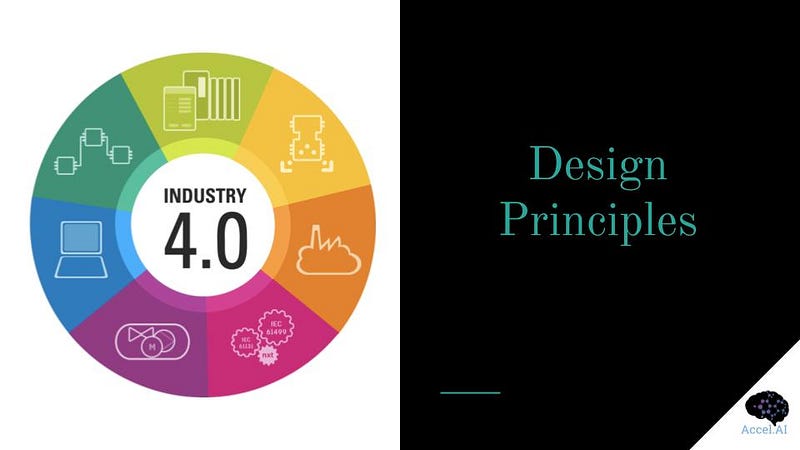
Along with the technical skills in AI engineering, individuals will be needed to create and implement principles around design and user experience. There are 4 design principles in what some call — Industry 4.0 as described by wikipedia:
Interoperability: The ability of machines, devices, sensors, and people to connect and communicate with each other via the Internet of Things (IoT) or the Internet of People (IoP)
Information transparency: The ability of information systems to create a virtual copy of the physical world by enriching digital plant models with sensor data. This requires the aggregation of raw sensor data to higher-value context information.
Technical assistance: First, the ability of assistance systems to support humans by aggregating and visualizing information comprehensibly for making informed decisions and solving urgent problems on short notice. Second, the ability of cyber physical systems to physically support humans by conducting a range of tasks that are unpleasant, too exhausting, or unsafe for their human co-workers.
Decentralized decisions: The ability of cyber physical systems to make decisions on their own and to perform their tasks as autonomously as possible. Only in the case of exceptions, interferences, or conflicting goals, are tasks delegated to a higher level.
Cooperation between humans and technology
So, how can we upskill to create a world where we can live and work alongside machines? Can we stop viewing automation as the enemy and learn to embrace its benefits while being adequately prepared for the risks?
Sustainable AI Development
Can we embrace new job opportunities to engineer advanced robots and systems?
Can we acknowledge that sustainable AI development means ethics, design, user experience, and long term effects on our society have to be part of the conversation?
In this critical moment of preparing machines to take on many of the responsibilities we have formerly entrusted to other human beings, we must look at ourselves, at our companies, at our societies, and ask;
Who are we? Who represents us? And who do we represent?
We must have more than a single voice, a uniform experience, a typical approach. We must work harder to have technology represent every one among us.
Remember the Chen Family?
In the near future nearly all legal research will be performed by algorithms and Ms. Chen would only be expected to argue trial cases. In this world it will be her ability to communicate the facts as researched by AI with the jury that will be the most important part of the job. As for Mr. Chen, much of the prescribing work and diagnosis will be completed by AI, further more Dr. Chen will be accompanied by nurse and physical therapy bots that will take over much of the medical manual labor performed by humans today.

Should their children choose to pursue the traditional careers of their parents, their work will be greatly integrated with machine learning systems and they will need not only the skills of their profession but an ability to be extraordinarily human in a machine heavy environment.
If instead they choose to pursue careers in AI and computer science their son will likely go on to learn the skills needed to be successful alongside advances in this technology, but unless things drastically change, their daughter will have a much harder time — as women only make up 18 percent of CS majors today.
Priming our workforce for the 4th Industrial Revolution
At Accel.AI, we are excited to launch a new set of workshops focusing on Human Development for AI Engineering. Starting with a workshop on Engineering Mindset for AI, led by our personal development mentor Jen Shae Roberts.
This 90 minute workshop will be diving into some of the well-researched tools to gain insight into understanding mindset, what our own mindset is, what it means, how it plays out in work and life, and what we can do about it. There will be four sections, which will later be developed into full day workshops: growth mindset, learning how to learn, values and goals, and mindfulness. We will be applying theory and practice with a combination of teaching and interactive exercises, giving the participants something solid to come away with as they start on their journey in becoming AI engineers.
Register for the workshop!
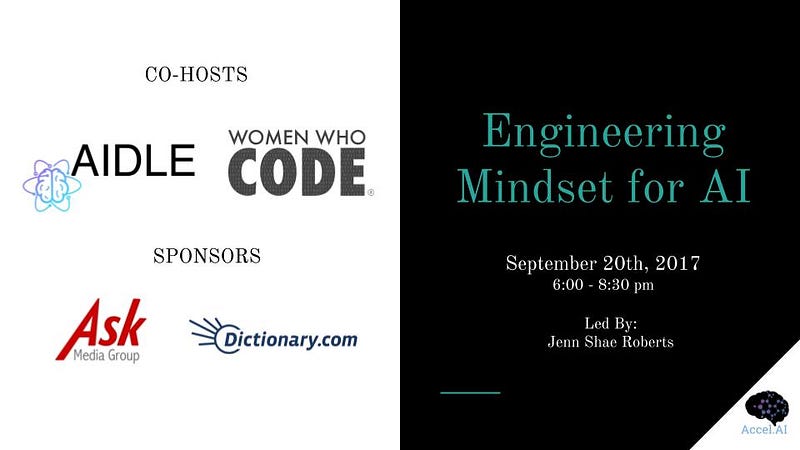
Thank you!
You can stay up to date on our progress, workshops, and plans going forward through our website, mailing list, meetup group, twitter and facebook page.
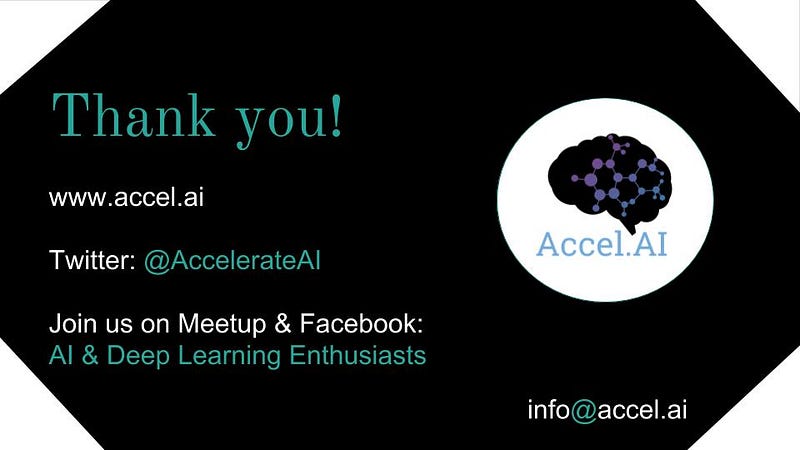
Join us in shaping the next generation of AI engineers and enthusiasts around the world!
References:
Harnessing automation for a future that works: http://www.mckinsey.com/global-themes/digital-disruption/harnessing-automation-for-a-future-that-works
Where machines could replace humans: https://public.tableau.com/profile/mckinsey.analytics#!/vizhome/InternationalAutomation/WhereMachinesCanReplaceHumans
The Future of Employment: http://www.oxfordmartin.ox.ac.uk/downloads/academic/future-of-employment.pdf
Inclusive AI — Technology and Policy for a Diverse Urban Future: http://citris-uc.org/wp-content/uploads/2017/07/Inclusive-AI_CITRIS_2017.pdf
The Future of Jobs Employment, Skills and Workforce Strategy for the Fourth Industrial Revolution: http://www3.weforum.org/docs/WEF_FOJ_Executive_Summary_Jobs.pdf
Retrain or be Replaced: Tax Systems the Key to Unlocking Skills for Jobs in the Future: https://www.linkedin.com/pulse/retrain-replaced-tax-reform-key-unlocking-skills-future-meera-pillai
Research: Technology Is Only Making Social Skills More Important: https://hbr.org/2015/08/research-technology-is-only-making-social-skills-more-important
IT sector to lose 6.4 lakh “low-skilled” jobs to automation by 2021: HfS Research: http://economictimes.indiatimes.com/articleshow/53052040.cms?utm_source=contentofinterest&utm_medium=text&utm_campaign=cppst
Will a robot take your job?: http://www.bbc.com/news/technology-34066941
